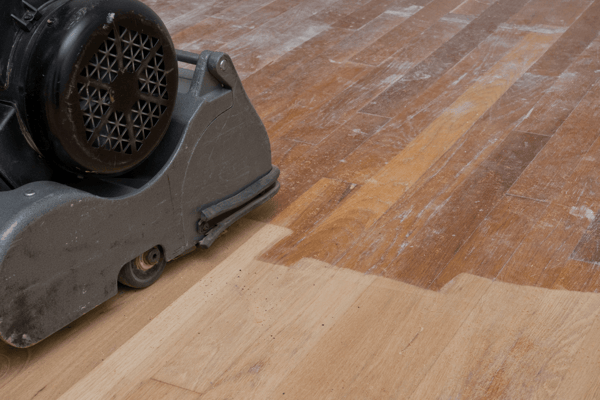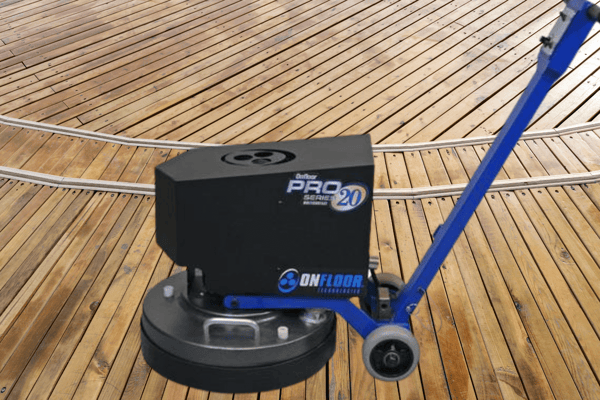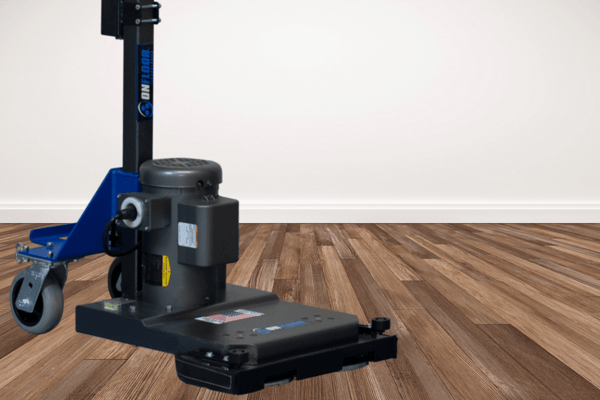Renovating an older home? It’s worth ripping up that carpet to see if there’s a hardwood floor waiting for a loving restoration.
According to the National Wood Flooring Association, over 80 percent of real estate agents say that houses with hardwood floors are easier to sell, sell faster, and sell for more money.
If you’re itching to rent or buy a floor sander, read through this handy guide to the types of floor sanders first. You’ll get a feel for what’s the best options for DIY and professional wood floor restoration and finishing.

What Does a Floor Sander Do?
Has all this talk of floor restoration got you asking, “What is a floor sander?” We’re here to explain the ins and outs of these time-saving construction machines.
Floor Sander Functions
People use floor sanders to smooth out an existing floor (in cases where a floor needs renovation or repair) or a newly laid floor. This is to prepare it for finishing with a coating, such as a varnish, oil, or paint.
Floors sanders range from large to small machines, and one person operates them. They come with a wide variety of fixtures and sandpapers that give different smoothness to a wood floor. Getting the sanding right the first time will leave you with a floor that’s easy to maintain.
People who know how to use a floor sander are called finishers and floor sanders. It’s their job to select the right sandpaper for the task, guide the machine over the floor, and inspect for uneven areas or excess glue.
If you’re DIYing your renovation, you’ll need to learn how to do all these tasks by yourself.
Why a Floor Sander Is Essential
Trying to sand the floor of an office or home by hand would be a mammoth task. You’d tire quickly and likely do some damage to your joints from all that bending and repetitive movement. An electric sander takes the effort out of this sometimes tedious job.
Wood is a soft, porous natural material. It’s dents and stains easily. Sanding helps to remove stains, erase scratches and dings, and level out a wonky floor. It’s an essential decorating step to take before applying any kind of wood finish to the floor.
What’s most important is understanding which type of sander is the best floor sander for the job you have ahead of you.

Types of Floor Sanders
The National Association of Home Builders recognized hardwood flooring among the 7 top residential design trends for 2020.
If you’re lucky enough to buy a home with wood floors in need of restoration, it’s important to know how to use a floor sander. For contractors, it’s essential to understand which sanders are worth dropping those hard-earned profits on.
Drum Sander
A drum sander is perfect for the first stage of a refinishing project. Its large spinning drum is fitted with a roll of sandpaper in heavy, abrasive finishes.
A drum sander is a big machine that can easily chew through soft floorboards if you’re not careful. Move carefully, don’t linger in one spot for too long, and be sure to wear eye and ear protection for safety.
Before you turn on your drum sander, you need to prepare your floor. Remove any nails or screws, fill cracks, repair broken floorboards, wash the boards and let them dry, and then vacuum to remove dust.

Orbital Sander
An orbital sander works by oscillating a plate of sandpaper across a surface. It’s great to use when you need a light to medium sanding.
You don’t need as much strength to operate this machine as you do for a drum sander. Because an orbital sander is handheld and light-duty, you’re unlikely to make mistakes using it. You don’t need to worry about accidentally over-sanding an area until it’s uneven with the rest of the floor or cutting ugly grooves into a floorboard.
An orbital sander is an essential power tool for professionals to add to their arsenal and also compact enough to be great for DIYers.

Edge Sander
Most types of sanders can’t reach easily into the corners of a room. This is where an edge sander comes in handy. It’s arguably the best floor sander for smoothing tight spots.
An edge sander takes the best of a drum and orbital sander and combines them into one product. It uses a belt-and-roller system of the drum sander to move the sandpaper inside the machine. The hand-held portability of an orbital sander makes it easy to maneuver into even the trickiest of spaces.
The wheels of this clever machine allow the band of sandpaper to hit the floor at just the right angle.

Tips and Tricks for Getting the Best Floor Finish
Now that you’re clear on the question “What is a floor sander?” it’s time to dive into all the ways you can get the finest finish on your floors.
Match the Sandpaper to the Job
For very rough floors with lots of dents, sticky bits, or uneven patches, you need to use a heavy-duty sanding fixture. For example, Onfloor’s 50 grit Diamabrush Wood Tool removes stubborn polyurethane or other adhesives from a floor. For smoothing a floor, typically the higher the grade of sandpaper, the finer the grit.
Consider the Final Finish
Maybe you’re resurfacing an old wooden floor? Perhaps you’re putting that very first coat on a new floor? What you choose to finish your floor makes all the difference when it comes to showing off the hard work you put into sanding it.
Before applying a finish, clean the floor. It needs to be free of dust and debris. There are three main types of finishes: varnish, water- or oil-based polyurethane, and penetrating- or non-penetrating sealer. Which you choose will depend on how durable you want the floor to be.
If you’re building an eco-friendly home or seeking LEED or similar environmentally friendly building certifications, consider using non-toxic floor finishes, such as water-based polyurethane or natural oils.
Vacuum up Dust to Protect Your Health
It might appear to be harmless, but dust can damage your health. Knowing how to use a floor sander won’t matter if you’re not protected from dust.
Outside of wearing the right kind of mask, it’s important to clear an area of dust as soon as you produce it. A sander usually has a built-in vacuum function. For commercial jobs, this might not be enough.
Contractors working on big projects should consider getting their hands on a heavy-duty vacuum specially manufactured with dust collection in mind.
DIY or Get in a Professional?
Dust is just one safety issue when doing your own floor restoration or finishing floors for a client. Other safety tips include wearing full body protection, including gloves, goggles, and work boots. Make sure the floor is clear of hazards like tools and electrical cables before turning on the floor sander.
If learning how to use a floor sander seems too difficult or expensive, you could even consider cheaper alternatives to hardwood, such as high-quality laminate vinyl or engineered wood. They need little to no preparation and are easy to install.
Are you interested in buying a sander or need to top up your stock of sanding plates? Request a demo from Onfloor Technologies today.

3 comments